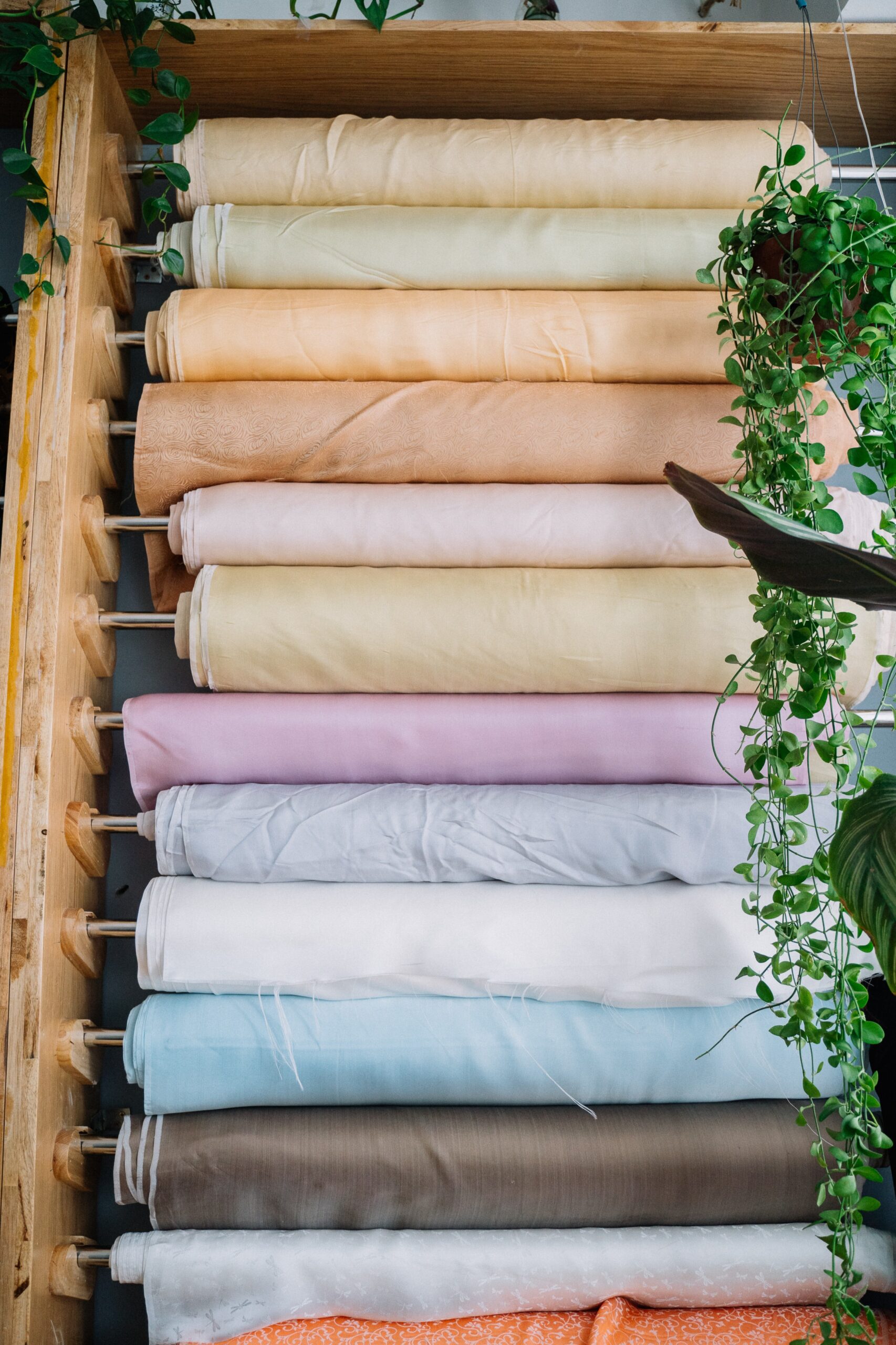HOW DAMAGING ARE THE MATERIALS VISCOSE, POLYESTER AND NYLON?
Date
- Published February 1st, 2021
‘Each of us is a unique thread, woven into the beautiful fabric, of our collective consciousness’
Jaeda DeWalt

Let’s talk about fabrics. Because, how harmful are these common used fibres actually? First up for discussion, nylon.
Nylon is often used for swimwear, activewear, lingerie and rainwear. It is a particular type of plastic that is obtained by reacting two compounds of crude oil, then braking it down to smaller pieces, melting these and forming it into fibres, which ultimately lead to the weaving of specific fabric products. Different kinds of nylon make the production of silk and wool possible. Unfortunately, nylon is not biodegradable, which makes it harder for non-developed countries to dispose of nylon products and related waste in a non-harmful way. Besides, nylon releases microplastics into our surroundings, without even realizing it. Nylon has a slow rate of falling-off, and therefore will last for long in the ground without decaying off. The concentrations of the microplastics are expected to continue rising as the use continues increasing.
There are also benefits to the production and use of the nylon fibre compared to silk, cotton and wool; cost efficiency, sense of softness, a far greater resilience hence durability, light weight, evaporation of sweat, water resistance and endless possibilities in developing prototypes because of the low melting point.
However, during production, gases such as nitrogen dioxide and other nitrous gases are released. These gases are harmful as it reacts with the ozone layer gases thereby weakening it. In turn, harmful waves from the sun can now penetrate the atmosphere causing adverse effects; they produce an impact on human skin, a drought by killing plants and drying up water sources in most places due to increased heat in the atmosphere. These emitted gases are also responsible for global warming where they block reflected light from the earth crust. Furthermore, nylon does not combine properly with dyes and hence it is hard to add colors. The method used to add color to nylon fabrics involves processes that significantly contribute to water pollution.
How harmful is polyester?
Polyester is often used for outerwear garments, and is made of polymers, produced by mixing ethylene glycol, which is derived from petroleum, an terephthalic acid. In other words, polyester is common plastic that goes beyond just the apparel industry. Being derived from oil, it has even become similar to polyethylene, which is used for packaging and plastic bottles. As polyester is built on synthetic petroleum, these clothes are made from carbon-intensive, non-renewable resources, and make up more than sixty-five per cent of fibres used in the textile and fashion industry. In addition, the clothes are not bio-degradable, polyester fabrics will not decompose for between twenty and two-hundred years, and the act of dying the clothing results in toxic waste water and causes serious problems to humans, plant and animal life. Thirdly, it takes hundred and twenty-five MJ of energy and 14.2 kilograms of CO2 to produce one kilogram of polyester, which led to a 282billion kg of CO2 emitting of greenhouse gases in 2015.
Nonetheless, manufacturers find polyester clothes cheap to produce, and therefore simple to sell. The major advantage for consumers to buy clothing made from polyester is its convenience; polyester is often wrinkle-free, quick to dry and is easy to maintain. However, washing these clothes sheds up to 1900 microfibres into the waterflows every wash load. Of course, the shed rate depends on specific fabric type, blend, construction, the age of clothing and washing machine type. These microplastics, that contain pesticides and chemicals, are found in our waters, will not biodegrade, and are eaten by fish and planktons, eventually ending up in our food chain. It is estimated that for every 100,000 people, up to 110 kilograms of microfibres is released into local waterways on a daily basis. This amount is equal to the pollution caused by 15,000 plastic bags. By 2050, it is estimated that there will be more plastic in our oceans than fish.
How harmful is viscose?
Viscose is often used for drapey summer dresses, soft blouses, synthetic velvet. Viscose is also known as rayon, and is a manufactured regenerated cellulose fibre; neither natural nor purely synthetic. Cellulose is the chief component in the walls of plants, and in this case viscose is made from wood pulp. After reading this, it might look like viscose is a natural fibre after all, however the production of the eventual garment requires extensive processing. In order to create garments from viscose, chemical treatment and consequential manufacturing techniques are essential. Furthermore, the raw wood frequently comes from unsustainable practices and to harvest the raw material impacts the environment. The processing plants mostly do not have adequate treatment facilities to stop the chemicals used from polluting water and air.
Some pro’s which might influence consumers’ decision for viscose include breathability, inexpensiveness, draping and softness. For manufacturers, the versatility, color retention and lack of static build up are powerful factors to do business with viscose. Yet, the actual production of viscose fibre brings health risks to garment workers and local communities, due to being exposed to toxic chemicals and lax law enforcement of environmental and social regulations in China, India and Indonesia, where eighty per cent of global production is produced. Toxic wastewater is dumped in local lakes and waterflows, affecting traditional fishing activities and ruining the quality of life of local communities. Families are suffering cases of cancer and birth deformities, as their groundwater and soil have been contaminated by industrial pollution.




